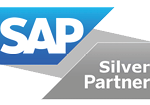Efficient HR processes are the backbone of a well-run organization, driving productivity and enhancing employee experiences. With the right tools, optimizing these processes doesn’t have to take months. SAP SuccessFactors empowers companies to streamline HR operations, automate routine tasks, and gain real-time insights—all within a 90-day timeframe. This blog outlines a clear roadmap for rapid implementation, highlighting strategies for accelerated onboarding, seamless automation of core HR functions, real-time KPI tracking, and lessons learned from successful adopters. Discover how your organization can achieve impactful HR transformation in just three months.
Setting the Foundation: Preparing for 90-Day HR Optimization
Preparation is a critical step when embarking on an accelerated SAP SuccessFactors deployment. Senior HR leaders and IT professionals must begin with a thorough current-state analysis, assessing pain points and identifying high-impact opportunities for HR optimization. This includes examining existing workflows, reviewing compliance requirements and evaluating gaps in digital capabilities. Engaging key stakeholders from HR, IT and leadership ensures shared accountability and sets expectations for the transformation journey. Defining clear project objectives, such as increasing HR automation or decreasing manual onboarding time, will shape the implementation approach. A key part of early preparation is identifying HR KPIs that resonate most with the business, such as time-to-hire, employee turnover or payroll accuracy. These metrics will serve as benchmarks to monitor progress after go-live and ensure the organization is consistently moving towards predefined goals.
Designing a 90-Day Roadmap for SAP SuccessFactors Implementation
Crafting a 90-day implementation roadmap involves prioritizing high-value modules and sequencing project milestones. The first 30 days are devoted to configuring core HR processes and migrating foundational employee data. This phase involves mapping data fields, testing integrations and defining user roles to set the stage for automation. By days 31 to 60, focus shifts toward more complex modules such as Employee Onboarding, Payroll and Time Tracking. This interval also emphasizes running parallel processes, enabling teams to test system outputs while maintaining business continuity. The final 30 days are dedicated to user training, comprehensive testing and fine-tuning based on real-world scenarios. A staggered rollout approach, where modules like Employee Onboarding are introduced incrementally, ensures that feedback is promptly incorporated. Throughout the project, tight collaboration between HR and IT supports a seamless transition and paves the way for accelerated HR optimization.
Accelerating Employee Onboarding for Immediate Impact
Rapid Employee Onboarding is a hallmark of SAP SuccessFactors and plays a significant role in driving early ROI within the first 90 days. Traditional onboarding processes are often plagued by inefficiencies, manual paperwork and inconsistent experiences for new hires. SAP SuccessFactors addresses these challenges by offering customizable workflows, digital document management and automated task assignments. Key onboarding activities such as background checks, compliance forms and training schedules are streamlined, enabling new employees to be productive from day one. Integration with payroll ensures accurate compensation setup, while digital signatures expedite approval cycles. Automated notifications keep HR, managers and new hires aligned, dramatically reducing onboarding cycle times. By leveraging HR Automation in onboarding, organizations can boost retention, improve new hire engagement and provide a consistent, welcoming experience that reflects the company’s values.
Maximizing ROI Through HR Automation and Core Process Optimization
Deploying SAP SuccessFactors brings HR Automation to the forefront, allowing organizations to reengineer critical HR functions such as payroll, time tracking and benefits administration. Automation minimizes manual data entry, reducing errors and freeing HR personnel to focus on strategic initiatives. In the context of a 90-day implementation, starting with payroll and extending automation to areas like absence management and performance evaluations yields immediate efficiency gains. Automated workflows support self-service capabilities, empowering employees to update personal information or request leave without HR intervention. The system’s built-in compliance controls also help organizations stay ahead of regulatory changes, reducing the risk of costly oversights. Embracing automation is not just about streamlining work; it’s about creating the foundation for ongoing HR Optimization that evolves as business needs change. By the end of the 90 days, teams typically report measurable decreases in administrative workload and improved satisfaction among both employees and managers.
Tracking and Measuring HR KPIs for Continuous Improvement
A data-driven approach is essential for demonstrating the success of SAP SuccessFactors implementations. From the outset, organizations should identify the HR KPIs that are most relevant to their strategic objectives. Examples include time-to-fill, offer acceptance rates, onboarding completion, payroll accuracy and employee engagement scores. SAP SuccessFactors offers robust analytics and customizable dashboards, enabling HR leaders to monitor performance in real time. Measuring KPIs at regular intervals uncovers trends, highlights areas of success and flags opportunities for further optimization. For instance, a consistent decrease in onboarding duration or a drop in payroll errors is a clear indicator that HR Automation is delivering value. It is equally important to track qualitative metrics, such as employee feedback on onboarding or satisfaction with digital HR services. Combining quantitative and qualitative measures ensures a holistic view of progress and supports evidence-based decision-making for future improvements.
Streamlining Offboarding With SAP SuccessFactors for Risk Reduction
While onboarding processes often steal the spotlight, automating offboarding is equally important in managing organizational risk. SAP SuccessFactors provides a structured framework for offboarding, ensuring all critical steps are completed systematically. This includes revoking access to systems, recovering assets, conducting exit interviews and managing final payroll settlements. Automated notifications inform IT and facilities teams of impending departures, reducing the likelihood of security lapses or missed asset retrievals. Documentation and compliance tasks are managed digitally, leaving an auditable trail and improving adherence to legal requirements. Streamlined offboarding not only minimizes disruptions but also contributes to a positive last impression for departing employees. By using SAP SuccessFactors to optimize both the beginning and end of the employee journey, organizations create a complete, well-governed HR lifecycle.
Many organizations have successfully implemented SAP SuccessFactors rapidly, achieving significant business benefits within just 90 days. For example, a mid-sized manufacturing firm with limited HR resources completed a phased rollout focused on Employee Onboarding and payroll automation. Within weeks, they reported a 40 percent reduction in manual onboarding effort and faster time-to-productivity for new hires. Another case involved a technology company that used SuccessFactors’ analytics dashboards to set and track HR KPIs. This enabled them to pinpoint process bottlenecks during onboarding and make targeted improvements that increased hiring efficiency. By choosing to automate HR core functions, enterprises consistently report higher employee satisfaction scores, lower turnover rates and enhanced data security. These real-world examples underscore the value of a focused, well-structured 90-day implementation plan for organizations targeting rapid HR Optimization.




